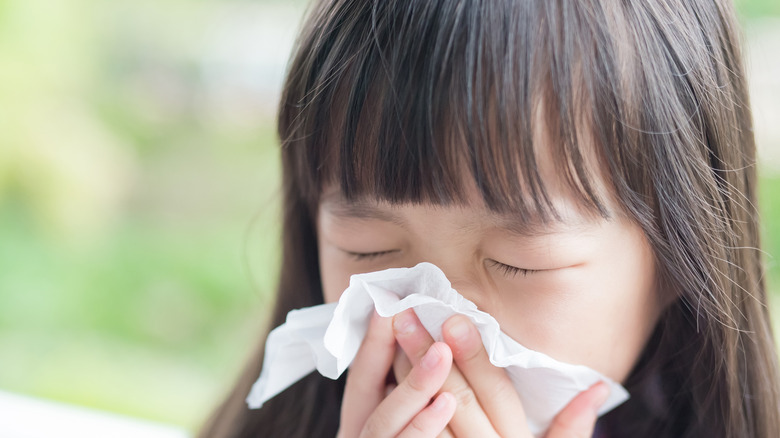Why Childhood Allergies Are Becoming More Common
The frequency of childhood allergies has been rising in recent years, per the National Center for Health Statistics (NCHS). Food and skin allergies, in particular, have shown the greatest increase between the years of 1997 and 2011. The former rose by nearly 50% while the latter demonstrated about a 70% increase. Food Allergy Research & Education (FARE) also pointed out that between the years of 1997 and 2008, the number of tree nut allergies among U.S. children almost tripled.
While not all allergies cause a person to go into life-threatening anaphylactic shock, they certainly impact quality of life. FARE explains that 1 in 3 children will find themselves the target of bullying if they have a food allergy. A 2020 study investigating the well-being of children with allergies also found that the presence of a food allergy significantly decreased quality of life across all areas, including social, emotional, and dietary. It also impacted the entire family unit by restricting communal activities.
When it comes to food allergies, there are eight main allergens that account for the majority of cases -– milk, tree nuts, wheat, soy, peanuts, eggs, fish, and shellfish, per MindBodyGreen. Skin allergies also have a range of causes, including clothing, latex, fragrances, plants, and animal dander, outlines WebMD. When the body encounters these allergens, it initiates an immune response that causes an array of unpleasant symptoms, ranging from skin hives and asthma to itchy and red eyes. But what is actually behind the increase in childhood allergies?
Are modern-day lifestyles to blame for the rise in childhood allergies?
MindBodyGreen gives a few potential reasons for the boom in childhood allergies. For starters, our external environment could be to blame. Research has shown that a lack of vitamin D, the presence of pollutants and toxins in our food, water, and air, and not enough exposure to healthy microbes and parasites weaken the immune system and make us susceptible to developing allergies. A 2010 study investigating what is known as the hygiene hypothesis seems to back this up. This hypothesis posits that a lack of infectious agents in early childhood can lead the body to perceive certain foods and environmental components as a threat. The study found evidence for this causal relationship.
Another possible explanation for the prevalence of food allergies is misguided instruction on how to introduce potential allergens during the weaning stage of development (via MindBodyGreen). Parents were told to avoid giving their babies common allergy-causing foods in order to prevent allergies, which has now been thought to accomplish the exact opposite. Introducing these common allergens early and often is believed to protect against allergy development.
One last possible cause for the rise in childhood allergies is a similar rise in leaky gut syndrome (per MindBodyGreen). Those who suffer from this condition experience higher gut permeability, which allows for the passage of larger substances through the gut lining, in turn potentially provoking an elevated immune response and leading to allergies.

